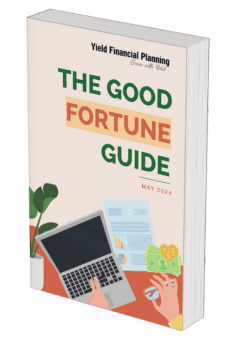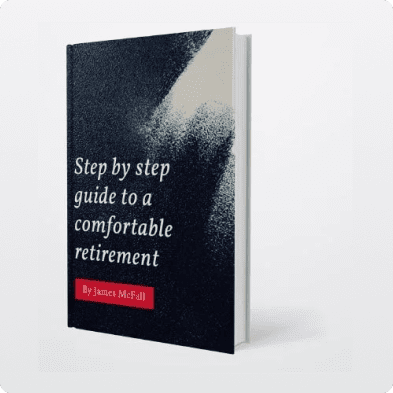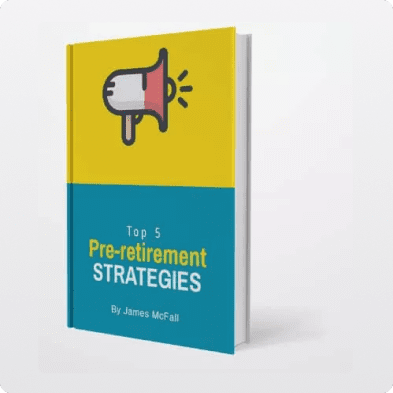First of all let me say, I think it is excellent that you are taking the time to review how a Self Managed Super Fund (SMSF) can help you achieve your retirement goals. However, when deciding whether SMSF is a viable option for you, you should ask the question “how much does it cost to set up a SMSF?”.
There is no better structure available in Australia for you to personalise your retirement and when they are suitable, they can be the stand out best solution.
No matter what your knowledge is currently about superannuation, as a working Australian your super fund will become a sizeable component of your retirement savings and the decisions you make with it now, will impact how much you end up with in retirement.
In this blog we will help you understand how important your fund balance is and how important your personal income is too, when deciding on the suitability of a SMSF for you.
An SMSF is an option that exists for people who are seeking greater control of their retirement savings, so before you think too much about it as an option, I would weigh up if having more control is something you think could be valuable.
We help our clients navigate the decision on SMSF suitability daily and what we have found the most common reasons people want this control includes:
- Not being happy with their existing super fund and think that they can achieve greater returns on their own.
- They want investment flexibility to own property and direct shares or some other specific investment, like a collectable.
- They are in business for themselves and are thinking about buying a commercial property that their business can operate from.
- They are nearing retirement and want to transfer wealth into the tax effective environment of super, whilst maintaining a similar investment portfolio inside super, to what they’ve had invested personally.
- They want to leverage their super with a loan to buy property.
- They want to achieve cost control!
Can you relate to any of these?
Cost control is an interesting one, as what I’ve found is that it’s often not the primary driver for starting an SMSF, but it is always an important consideration and having a sufficient balance from the outset or a clear strategy for growing the balance plays a big part in achieving cost benefits.
So How Much Super is Enough for a SMSF to Become Cost Viable?
According to research from Rice Warner, the typical balance where SMSF’s become cost viable is $200,000 – $500,000. 
CHART 4.4: SMSF AVERAGE OPERATING EXPENSE RATIO, BY FUND SIZE (2012)
I think this graph is great, as it gives some factual guide on where cost effectiveness can be achieved. It shows that balance is the critical consideration when it comes to assessing viability of an SMSF but it also highlights that it is not a simple question to answer. $200,000 – $500,000 is a massive range and therefore it is important to assess your individual strategy for your fund before leaping in and setting one up.
Looking at the low end, to achieve cost efficiency with $200,000 it would suggest that your strategy will involve investments with very low cost, such as those readily available on the stock market, like shares and ETF’s, as these only attract a brokerage cost. It also suggests that the service provider used is basic in its offering. Possibly an online solution for fund tax and administration needs for example. All in all, I would call this a no frills approach that requires sound investment knowledge and high participation from the trustees of the fund.
With this said, if you do not feel you have the expertise to navigate the investment, legislation and tax decisions confidently enough to go it alone or simply value your time more highly than this and want support in managing the fund, then this naturally layers additional cost into the equation, that means a higher balance is needed to achieve cost benefits.
The investments you choose will also directly impact cost of course and investments like property and managed funds are more expensive, so before you set up a fund for yourself, it is important to break down what you want to invest in and what services you want to use to achieve a cost outcome that is acceptable to you. I would suggest it is worth your while to speak to a Financial Planner regardless and you can then make an informed decision on whether you use them to assist you with this.
When making the assessment on what balance you have, you first need to look at what you have in super of course, but then look it’s important to look at the options you have for growing it.
These can include:
- Pooling super balances
- Salary sacrifice
- Personal contributions
- Transfer of assets owned elsewhere, into super
So this brings us to how important your personal income is to the suitability of a SMSF. In short, it usually is and the higher your income, the more important it can be. It stands to reason really that a higher income will likely result in a larger super balance in the end and you’ve just seen that balance is the most important thing to making an SMSF cost viable.
Below we’ve prepared a table that goes some way to demonstrate how a higher than average income is likely to make an SMSF appropriate.

This data has been sourced from the ABS and reflects median income and super balances. Salary sacrifice tax savings are included to show tax benefits of voluntary super contributions, however we have not factored voluntary contributions into end super balance.
Taking the ABS data at face value, we have layered in the impact of someone who earns $200k p.a. at 40, 50 and 60 years of age and then assumed a rate of income growth to get to this point, followed by increases in line with inflation from there.
What it shows is that in all of these scenario’s, the end super balance at 65 will likely make it cost viable to start a SMSF. It also suggests that for each of these people, they could have taken control of their super sooner and started a SMSF cost effectively while approaching retirement. The reason for this is due to the sizeable amount of contributions going in from their employer so if this sounds like you, it is definitely worth looking into the suitability of an SMSF.
Other reasons a higher than average income can make an SMSF viable include:
- Voluntary contributions, which you may know of as ‘Salary Sacrifice’ are more affordable because of your higher than average income. This accelerates how quickly you build up your balance and becomes very relevant when thinking of starting a SMSF before it has become cost effective to do so
- A strong cashflow means that cashflow intensive strategies like borrowing could be appropriate. This may be an example where a lower balance can still make sense for what you are trying to achieve.
- Due to a higher than average tax bracket, voluntary super contributions are very attractive to make. This is illustrated in the table above, in the tax saved for salary sacrifice
What we’ve demonstrated for you here, is that while there are several variables you need to consider when assessing the suitability of an SMSF, the most important consideration of all is fund balance.
A higher than average personal income increases the likelihood that an SMSF will be viable for you though and it also opens the door to setting up a fund before it is cost effective, if there is a clear strategy for growing the fund balance quickly, through voluntary contributions.
Another key takeaway, we’d like to leave you with is that the decision to start an SMSF, should not just be an isolated investment strategy, but should be viewed as part of your broader financial plan. This is especially true if you are within 15 years from retirement, as regardless of where your wealth sits currently, such as assets owned by you personally or in a trust or even your own business, it is all for retirement once you stop working and an SMSF offers similar investment flexibility to what you get personally.
If you are after control, flexibility and are in a position to influence your super fund balance, then an SMSF could be perfect for your needs.

















